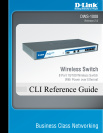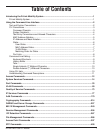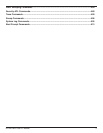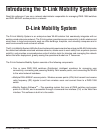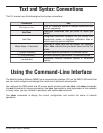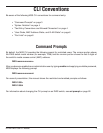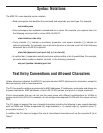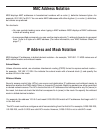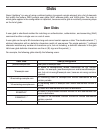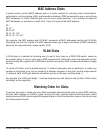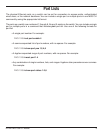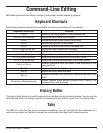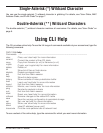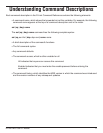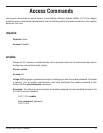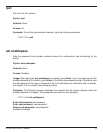
D-Link DWS-1008 CLI Manual 4
The MSS CLI uses standard syntax notation:
• Bold monospace font identifies the command and keywords you must type. For example:
set enable pass
• Italic monospace font indicates a placeholder for a value. For example, you replace vlan-id in
the following command with a virtual LAN (VLAN) ID:
clear interface vlan-id ip
• Curly brackets ({ }) indicate a mandatory parameter, and square brackets ([ ]) indicate an
optional parameter. For example, you must enter dynamic or port and a port list in the following
command, but a VLAN ID is optional:
clear fdb {dynamic I port port-list} [v1 an vlan-id]
• A vertical bar (I) separates mutually exclusive options within a list of possibilities. For example,
you enter either enable or disable, not both, in the following command:
set port {enable I disable} port-list
Syntax: Notations
Text Entry Conventions and Allowed Characters
Unless otherwise indicated, the MSS CLI accepts standard ASCII alphanumeric characters, except for
tabs and spaces, and is case-insensitive.
The CLI has specific notation requirements for MAC addresses, IP addresses, and masks, and allows you
to group usernames, MAC addresses, virtual LAN (VLAN) names, and ports in a single command.
D-Link recommends that you do not use the same name with different capitalizations for VLANs or
access control lists (ACLs). For example, do not configure two separate VLANs with the names red and
RED.
The CLI does not support the use of special characters including the following in any named elements
such as SSIDs and VLANs: ampersand (&), angle brackets (< >), number sign (#), question mark (?),
or quotation marks (“ “).
In addition, the CLI does not support the use of international characters such as the accented E (é) in
“décor”.



